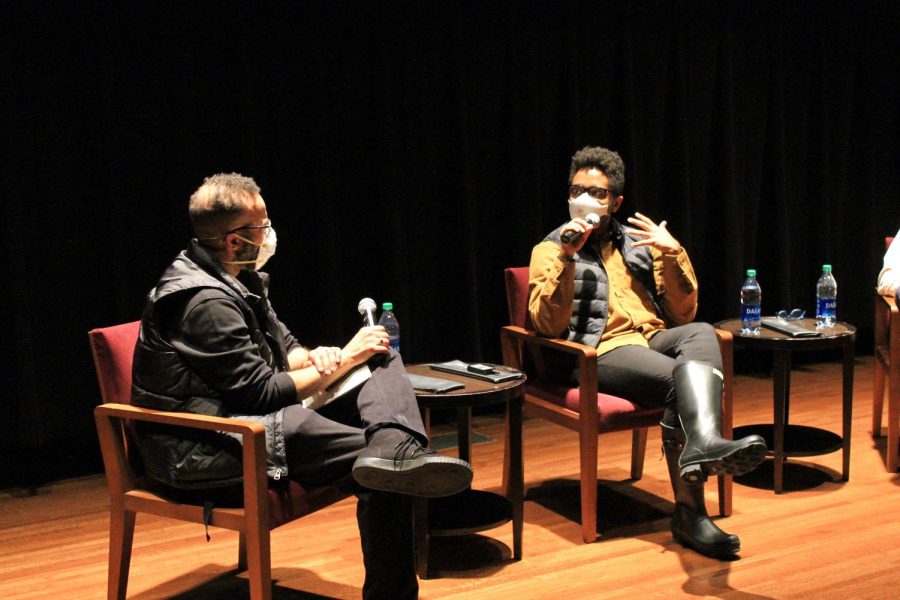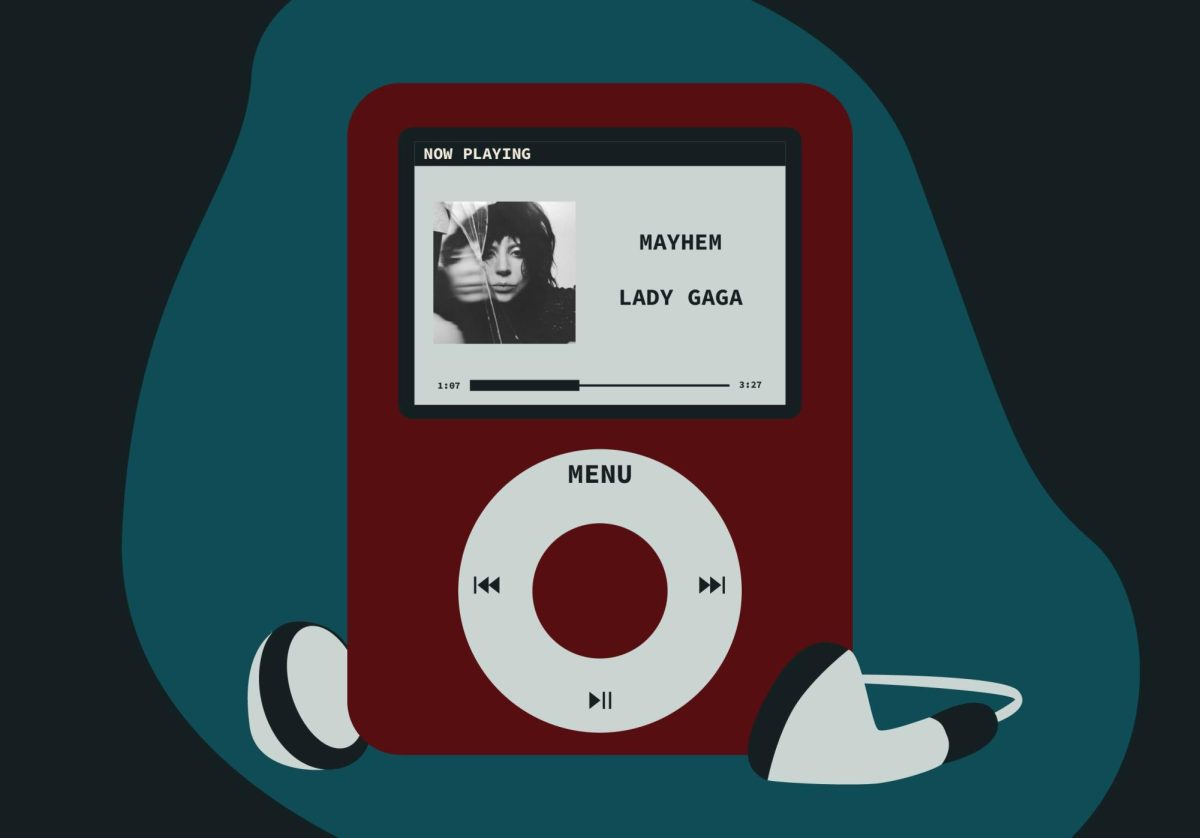How much can you hear in silence?
Seth Parker Woods and Spencer Topel don’t want you to think their performance piece “ICED BODIES” is just about a 125-pound block of ice. If you saw it, you’d see (and hear) that the black body of the ice cello holds much more — it is a manifestation of centuries of injustice, the stigma of mental illness and generational trauma — creating space for collective healing through choreographed sound, silence and movement.
The two spoke on all of this and more at their artist talk at Northrop, hosted by the Weisman Art Museum (WAM) in collaboration with the Great Northern Festival, nearly two weeks of events celebrating a 10 day celebration of Minnesota’s signature winters.
After nine months of closure due to renovations and COVID-19 cancellations, “ICED BODIES” was supposed to be the Weisman’s first live performance in a post-pandemic world, WAM program director Katie Covey Spanier said. The multiple-hour performance was originally scheduled for Jan. 29 but was postponed after COVID case levels in the Twin Cities rose.
The piece is a reimagining of works by Charlotte Moorman, a celebrated cellist and the founder of the New York Avant Garde Festival, in collaboration with Jim McWilliams in the 1970s. The original piece, titled “Ice Music for London,” featured a cello made of ice cubes and explored the passage of time. Moorman would play her own ice cello, completely nude and often sporting a necklace of flowers, until the ice melted and fell apart, though they had difficulties producing sound from the ice at the time.
This iteration of the piece, “ICED BODIES: Ice Music for Chicago,” was developed in 2016 when Topel and Parker Woods formed their artist collective, Topel | Woods. The two wanted to create a new extension of Moorman and McWilliams’ work that brought attention to the disproportionate number of police brutality incidents against Black men suffering from mental illnesses like schizophrenia.
“Seth contacted me and said, “Look, I want to dye this cello black, and I want us to create something new out of this,’” Topel said.
Parker Woods and Topel were set to perform “ICED BODIES” for the first time since the shutdowns in Minneapolis last weekend, but were hindered by the Omicron variant surge.
“The performance space needed in the museum for this project simply doesn’t allow for enough space among guests,” Covey Spanier wrote in an email to the Minnesota Daily. “Given the rate of infection and transmission, we made the difficult decision to postpone the performance.”
The piece is slated to be at next year’s Great Northern Festival instead, but the conversation with the artists led by award-winning poet and University of Minnesota English professor Douglas Kearney remained.
The duo considered ways to localize the piece to trauma over the murder of George Floyd in Minneapolis, but the overall message of “ICED BODIES” remains the same. Parker Woods and Topel did gently suggest that a piece about Floyd, or “specifically for Minneapolis,” was in the works.
“It’s unfortunately, maddeningly, still extremely relevant,” Parker Woods said of “ICED BODIES,” now almost four years after its first performance. “As an artist or composer, anybody who’s making things, you kind of get sick of things, but I don’t get sick of this piece.”
When they were contacted by Kate Nordstrum of the Great Northern Festival, the artists knew that their comeback would be relevant to the Twin Cities.
In conversations with Nordstrum, Parker Woods said they pondered ways to create space for commentary and healing, adding, “How could this be a work for the community and not just for the ivory towers or art collectors?”
Kearney and the artists addressed a cozy audience in Northrop’s Best Buy Theater on Thursday evening, starting off with a short clip from a past performance of “ICED BODIES.” In it, Parker Woods wears a plain black wetsuit as he gently caresses a true-to-size cello made of ice dyed a rich black color. There is almost no sound at this point in the performance, only the echoes of metal scraping ice.
“You’re given that moment to have a kind of phantom sound, musical experience that’s in your own imagination,” Topel said, adding that they want the audience to question their own sanity at first.
Creating an ice cello that could produce any sound took a fair amount of trial and error, according to Topel. At the time, they had access to Dartmouth’s engineering department, which helped tremendously in creating usable molds for the ice. The piece is able to produce sound because of this step, in which they freeze audio pickups into the ice mold.
During the performance, as Parker Woods taps, scrapes, smashes and stabs the body of ice, the impulses are processed by Topel and sent through glass panels that encase the room, allowing ethereal tones to sing throughout the space.
“The work exists as a space of scribing and and memorializing these people, but at the same time freeing them,” Parker Woods said, “but also creating a larger space for people regardless of your background, regardless of what you believe, to be able to come together collectively.”



















